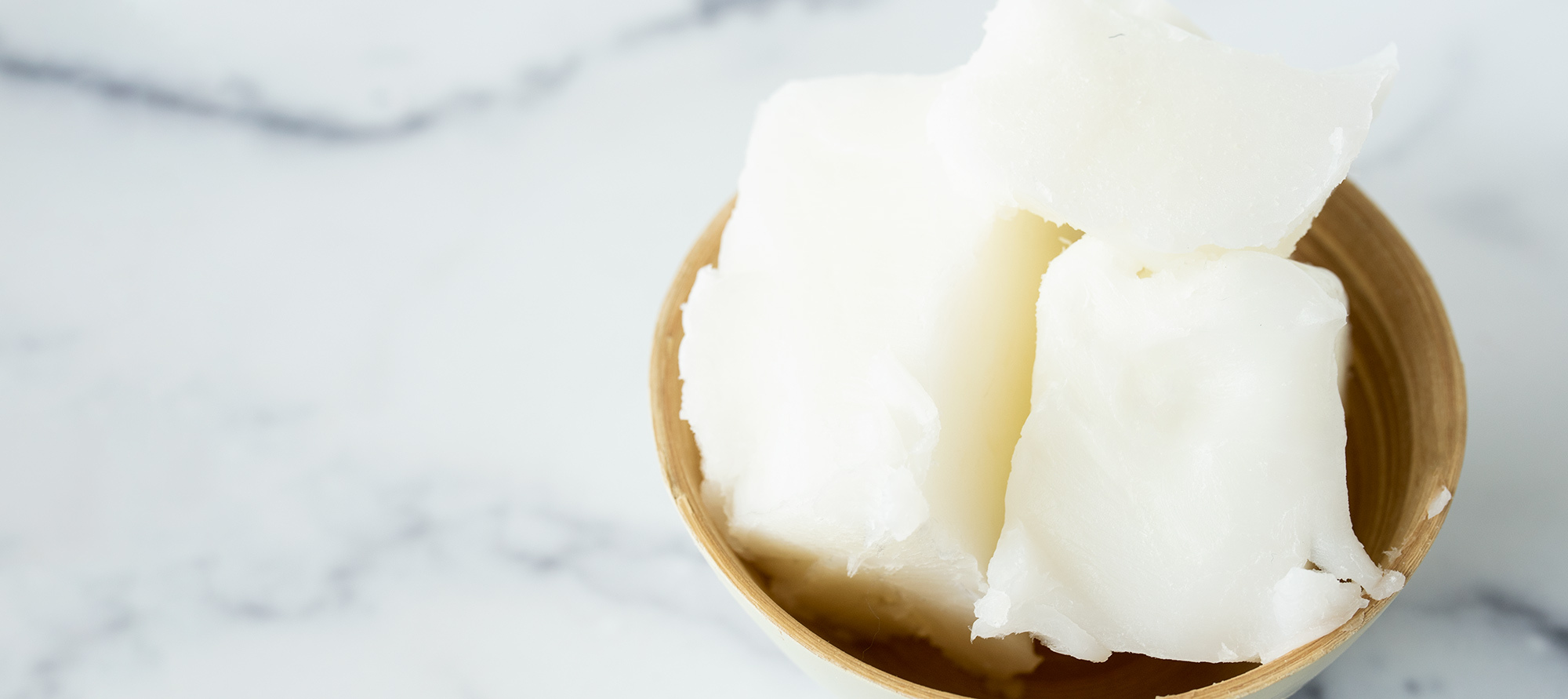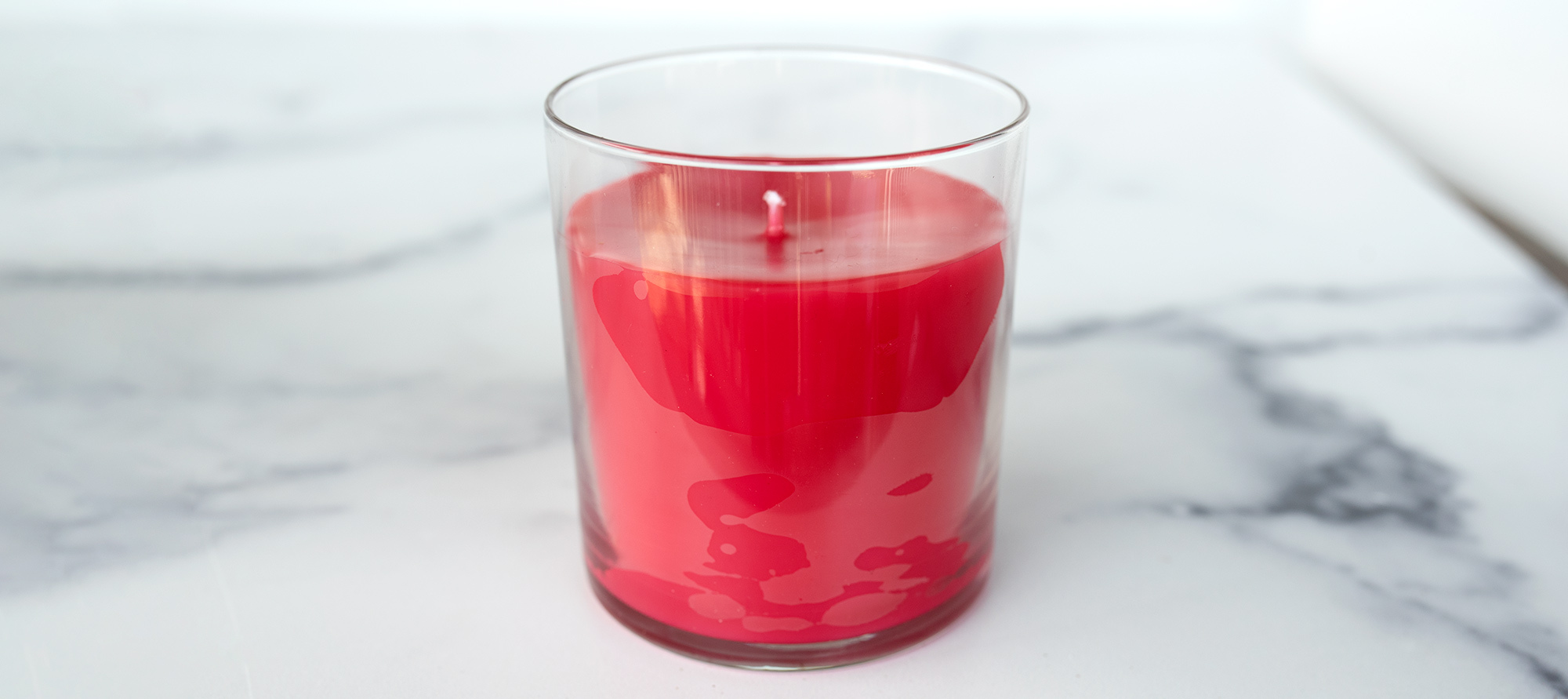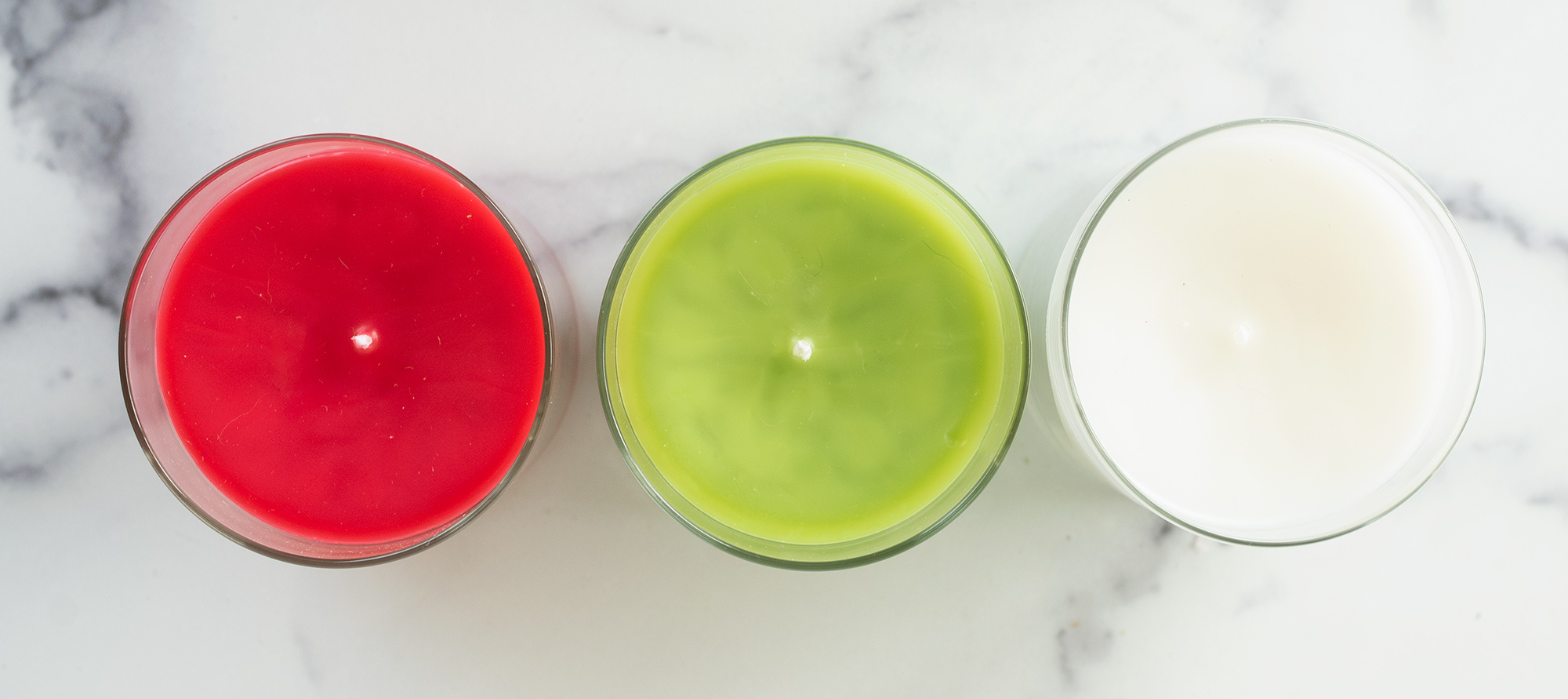LAB NOTES: Blended Waxes® Paraffin/Soy Wax (BW-910)

Our Testing Process
We divided our testing into three parts:
- Aesthetics: We tested for adhesion, frosting, and color issues.
- Fragrance Performance: We looked at fragrance solubility, retention, and cold and hot throw performance.
- Burn Performance: We tested various wick series and sizes to find the best burn.
For the fragrance testing segments, we used White Tea, Gardenia Tuberose and Very Vanilla fragrance oils. They have very different densities, viscosities, and ingredients. We hoped the variation would reveal potential solubility and burn issues.
General Overview
Application: Container candles and tealights
Recommended Fragrance Load: 6-10%
We’re excited to be extending our wax options with a new paraffin and soy wax blend for container candles. You get the creamy opaque finish and cleaner burn of soy with the smooth tops and fragrance performance of paraffin wax, it’s the best of both worlds. This is a great option if you like the look of soy waxes but have trouble with the finished aesthetic or haven’t been happy with the fragrance performance but don’t want to go with straight paraffin or bother with blending your own wax. While the exact ratio of paraffin to soy is proprietary, we do believe the wax is more than 50% paraffin, possibly 60-70%.
The wax comes in slab form and is firm but still easily cut up with a sharp knife. It has a faint characteristic odor but can not be detected in a finished candle. The melt point is 120ºF (48.9°C) which makes it easier to ship in warm climates. The wax color is off white, which is consistent with soy wax blends.
This wax is comparable to IGI 6006 which is also a paraffin soy blend. The biggest difference we found is the BW-910 has a more consistent color, faint odor, and better burn performance in larger containers. If you like the concept of a blended wax but weren’t happy with the performance of other blends we think you’ll like this wax quite a bit better.

Aesthetics
Surface and Glass Adhesion
The manufacturer recommended pour temperature for this wax is 150-170ºF (65.6-76.7°C) into a preheated jar. We tested pour temperatures from 140-180ºF (60-82.2°C) in containers at room temperature (72ºF, or 22.2°C). We did not see huge differences in the pour temperature from 160-180º (71.1-82.2°C), but we noticed jump lines forming when pouring below 160ºF (71.1°C). (Jump lines are formed when the wax starts to solidify immediately and leaves visible rings on the side of the container as you pour.) The tops were all smooth, however the candle poured at 180ºF or 82.2°C did have slight shrinkage around the wick. All of the jars had wet spots regardless of pour temperature.
We recommend pouring at 160ºF (71.1°C), we found this to give the best results for a flat surface and fewer wet spots. If you are using clear glass we recommend warming your jars to 100-110ºF (37.8-43.3°C) to help with glass adhesion.

Frosting
Because this wax is blended with paraffin we did not see any signs of frosting and do not anticipate this to be an issue over time. Paraffin can crystalize, which looks similar to soy frosting, if it is poured too hot into a cold container. If you see what looks like frosting you’ll want to adjust your pour temperature or preheat your container to avoid this from happening.
Coloring
We tested our Key West and Red liquid dyes at 6 drops per pound (454 g) of wax. We added the dye between 180-185ºF (82.2-85°C) and it mixed in very easily. The colors were bright and truer than when using pure soy alone, however, they were not quite as deep when using straight paraffin.
If you’re testing this wax after using pure soy, you may find you can use ½ - ¾ of the amount of dye you were using to obtain the same shades with this wax. If you were using pure paraffin you may find that you need slightly more dye to achieve the same shades with this wax.

Fragrance Performance
Solubility
We melted the wax to 185ºF (85°C) and then added 6% (1 oz per pound or 28 g per 454 g of wax) fragrance oil. The fragrance incorporated easily, and we didn’t see signs of separation. We were able to add up to 10% fragrance with no signs of sweating in our finished candles, Paraffin wax typically can not hold a large amount of fragrance oil without additional additives but because the blend contains soy wax we found the manufacturer's recommended maximum fragrance load of 10% was easily achieved even with one of our densest fragrance oil, Very Vanilla.
Hot and Cold Throw
After the first 12 hours we found the cold throw was incredibly faint, however, after 48 hours the cold throw became very strong with candles containing 6% fragrance and somewhat overwhelming with our Very Vanilla fragrance at 10%. We began testing the hot throw after 3 days. We were very pleased with the strength of all the fragrances at 6% and gave them a solid 3 based on our soy leaf fragrance rating.
We think the majority of fragrances will perform well at 6% and recommend this as a starting point for your testing. You may find some fragrance will produce a better cold and hot throw at 9%.
Burn Performance
Wicking
Finding the perfect wick for a blend of two very different waxes like soy and paraffin can sometimes be tricky. Paraffin waxes typically are easy to burn and we usually recommend our LX wick series. However, soy waxes tend to require larger wicks and usually need a core like our Eco or CD wicks. We tested all three of the wick series to see what would burn best in this blend.
The Eco wicks produced large flames and tunneled quite a bit before forming a full melt pool. While the flames were within an acceptable height (no more than 1.5” or 3.8 cm), the amount of tunneling seen before a full melt pool forming could be problematic if the initial burn terminates before the full melt pool has formed.
The CD wick series has been a reliable option for almost every wax we have tested it in. The disadvantage of the CD wick is it often forms large carbon balls, or mushrooms, even when the proper size is used for the container. Small diameter containers (less than 3” or 7.6 cm) did tend to have less mushrooming compared to larger diameter containers.
The LX series also produced good results with forming a good melt pool and maintaining a good flame. As we saw with the CD wick series, the LX also had some mushrooming in larger containers.
For larger containers we found that a single wick did not burn nicely, often producing large flames (2+ inches or 5.1+ cm), large mushrooms, and smoking. For containers over 3.3” (8.4 cm) diameter we found that using 2 wicks gave much better burn qualities, including even melt pools, 1” (2.5 cm) flame heights, and minimal mushrooming.